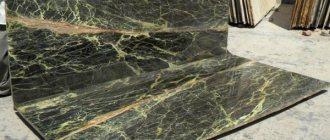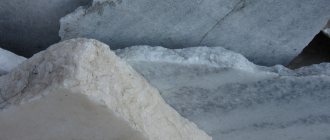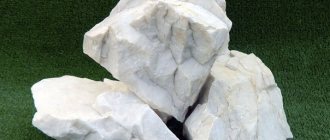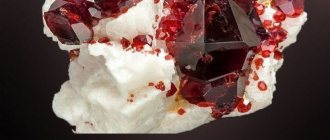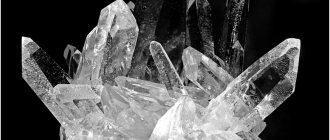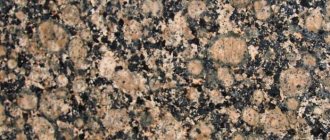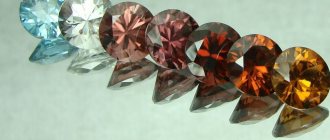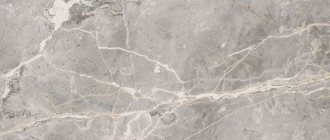Stone in history
The name was coined by the ancient Greeks: the mineral mined in the country was “shiny white.”
This is how “marble” is translated from the ancient Greek:
- Ancient Greek sculpture and religious buildings (for example, the temple of the goddess Aphrodite) have become world heritage. They still shine today.
- The ease of processing marble stone contributed to the development of glyptics: carving miniature images into stone. Such cameos and intaglios are kept today in private and public collections around the world. They are also in the Hermitage.
Later, the stone from Carrara captured the imagination of the great Michelangelo. His works are not inferior to ancient examples.
The rulers of the Italian principalities of the Middle Ages decorated the mansions with marble slabs. Today, the “marble lace” of the palaces of Tuscany or Venice is just as magnificent.
Light stone is perhaps the main building material in Muslim architecture. The most striking masterpiece is the Indian Taj Mahal made of white and pink marble. It is accompanied by a romantic love story. The monuments of Samarkand, Bukhara and other cities of Central Asia are no less beautiful.
Marble Palace in St. Petersburg
What is
Marble stone is a coarse-grained rock. This is the final stage of metamorphism of sedimentary carbonates.
That is, the origin of marble is metamorphic. The process took place at average temperatures and pressure. As a result, the sand grains of calcium and magnesium carbonate became larger.
This is how fine-, medium- and coarse-grained rocks were formed. The use of the stone depends on the grain size. Sculptors, for example, need fine-grained marble.
Marble comes in different colors. Some of its types are endowed with natural shine. But after polishing everything shines.
Sometimes the stone is translucent. Such specimens are dismantled by sculptors and decorators.
Combination with wood
The natural origin of natural stone and wood make it possible to effectively use marble and wood in the interior, creating harmonious and interesting interior compositions.
Tandem with wood Source pinimg.com
In the “marble + wood” tandem, the dominant accent is created by wood, and natural stone emphasizes its natural beauty. Wood miraculously softens the heaviness of marble and creates an atmosphere of warmth and comfort in the room.
Marble in a modern interior emphasizes the fashionable desire for space and minimalism. And if you combine them correctly, you can give the room an unusually stylish and harmonious look.
Where is it mined?
Stone deposits are developed in many countries: Italy, Greece, Norway, France, Germany, Ukraine, USA, Cuba, Uzbekistan.
In Russia these are the Urals, Khakassia, the Far East, and the Sayan Mountains.
Almost every mine supplies its own varieties of marble:
- Italy is the source of elite Carrara marble. The quarries are located in Tuscany, the annual production does not exceed a ton.
- France. The country produces a pink-yellow stone with barely visible veins (“Rose-fose”). Norman red marble is prized, recognizable by its red-brown shades with white veins.
- Russia supplies the domestic and world markets with white (Ufaley) marble from the Urals and colored Sayan raw materials. Its almost five thousand quarries contain more than a billion cubic meters of rock.
- Ireland, Central Asia – sources of elite green stone.
Germany is developing deposits of several types of marble:
- More often it is a light gray stone with white veins.
- Bavaria is famous for its red (or Jurassic) marble. The stone is prized for its rich red color and intricate white or green veining.
- The graphenstein variety looks noble. The stone is identified by its bright, clear pattern and moiré tint - gray, blue or white. These features appear after polishing.
A special situation in Greece. The Paros (Cyclida archipelago) and Pentelikon (outskirts of Athens) deposits have been developed since Antiquity. Today, their raw materials are registered with the state and are used only for the restoration of monuments.
Marble is mined by quarrying. Monolithic blocks are produced using stone-cutting and impact-cutting machines, and rope saws.
Mineral deposits
There are a large number of deposits in the world rich in marble deposits. The most famous and valuable is white marble, which is mined in Tuscany in the vicinity of Carrara. Deposits of Parian stone of yellow shades are located in Greece.
Rock mining is carried out in Cuba, Norway and France. In the USA, significant marble deposits are found in the Appalachians, in South Africa - in Natal.
Minor mining of this amazing stone is carried out in Russia. These are the Kibik Kordon, Pershinskoye and Koelga fields, located in the regions of the Eastern Urals. Marble was also discovered in Southern Yakutia, in the Irkutsk Territory and on the territory of the Kola Peninsula, but its development has practically not been developed.
The eastern CIS countries – Georgia, Armenia and Uzbekistan – are rich in marble deposits. The Ijevan, Khorvirab and Agrevan deposits, located on the territory of Armenia, are rich in black, brown and pink samples. The gray and red rock is mined in the Saliet and Molitsky deposits of Georgia. Uzbekistan has a large number of deposits of unique marble colors. The Gazgan deposit is known for the extraction of marble in pink and cream shades, the Aman-Kutan deposit for large crystals of gray and pink colors. Unique examples of fine-grained white marble, which gemologists place in a position higher than Carrara, are mined in the Malguzar deposit.
In Ukraine, Crimea, Transcarpathia and the Donetsk region are famous for marble deposits.
Physico-chemical characteristics
To a chemist, marble is almost pure calcium carbonate. The composition of the rock is complemented by chalcedony, feldspar, quartz, hematite, and other impurities. Their relationship creates the color and pattern of the stone.
| Rock type | Metamorphic rock |
| Color | White, grey, yellowish, green, red, black |
| Texture 2 | banded massive spotted |
| Structure 2 | granoblastic heteroblastic fine-grained medium-grained coarse-grained |
| origin of name | lat. marmor, name from Greek. Μάρμαρος – luminous stone |
Varieties
Marble stone of different grades is mined on the planet:
- White. Free from impurities, a sculptural and decorative type of stone.
- Black. It is created by an admixture of bitumen and graphite.
- Red. It comes in varying degrees of saturation - from purple to soft pink, sometimes “rusty”. This is determined by the amount of iron oxide in the composition.
- Blue. The tint is created by highly dispersed iron sulfide. Shades up to inky or almost black are possible. Rare expensive variety.
- Green. The tint is due to chlorite, epidote, and other iron-containing silicates. Rare, very expensive material.
- Yellow. It is created by impurity carbonates and iron hydroxides. There are ocher, orange, and brown shades.
- Grey. Coarse-grained stone in a full range of shades. You come across raw materials with inclusions that impart a yellowish or pinkish tint. The most durable in its family. Unlike other types, it can be cut.
- Beige. The shades and their intensity are created by limonite and manganese. Durable variety, suitable even as a floor covering.
- Brown. The base is complemented by iron, limonite and manganese. The most popular color is chocolate.
Dolomite marble stands apart. This rock is formed by the recrystallization of dolomite, additionally receiving magnesium.
Green
Green marble tiles can transform even the most unprepossessing space, turning it into a luxurious interior; deep tones of green and emerald go perfectly with beige and yellow shades. If you are looking to buy green marble for countertops or flooring, look no further than the types from Indian quarries.
In appearance, green finishing stone resembles malachite; green color in the interior has a calming effect, which is why many work offices and bank buildings are faced with it.
Where is it used?
Stone processing is not as difficult as, for example, granite. It is easy to cut, polish, grind. It practically does not absorb moisture and shines after polishing. These properties of marble have determined the areas of application in modern conditions.
Construction
As before, marble stone is popular as a building material:
- The walls are decorated with slabs and the floors are lined.
- They are used to line pools, fountains, and ponds.
- They grind countertops, mantelpieces, window sills, and plumbing fixtures (washbasins, bathtubs).
Marble countertops - They create stairs, columns, and other large elements of premises.
Marble chips are used for wall cladding, mosaic panels, textured plasters, and as a concrete filler.
Popularity increases the versatility of the raw material. Stone of any color is organic against the background of wood, ceramics, and drywall. Even plastic gets along with it.
Jewelry
Even the best varieties of stone are classified as ornamental. Almost all marble is well ground and polished, but it is heavy and cannot be cut.
Marble jewelry
Therefore, small beads, pendants, and inserts for rings are often made from it.
Decor
The second most popular (after construction) area of use of stone.
Marble furniture has been a popular trend in home decoration for many years.
It is complemented by large plastic works: vases, bowls, indoor sculptures.
Marble vases
The properties of marble make it a universal material for stone carvers.
They create everything from miniature figurines, photo frames, esoteric assortments to large vases, tables, chests of drawers.
Other areas
Marble boards are in demand by the electrical industry, and stone flour is taken by farmers.
A ritual assortment (boards, monuments, tombstones) is made from marble.
However, the modern microclimate of megacities is not suitable for delicate stone. Therefore, marble sculpture and other exterior products need regular cleaning from soot and other contaminants.
How to identify the origin of marble
Under the guise of natural marble, similar materials are often offered, for example, marbled limestone (calcite).
It is easy to distinguish the original:
- Fossilized plant remains, voids, and air bubbles are present in calcite, but not in marble.
- Calcite has a fine-grained structure.
- Marble can show through deep into the stone, calcite never does.
You can also distinguish natural stone from artificial:
- Resins and acrylic dyes as the main component make the man-made material too smooth and bright.
- It never shines through.
- Heats up faster.
- Much cheaper than natural ones.
- Natural marble dissolves rapidly with hydrogen chloride, while artificial marble does not react.
The last property can be checked on a piece of raw material.
Artificial marble
The high cost of natural stone prompted the creation of artificial marble.
The main component of this material is polyester resins. They are supplemented with mineral fillers, dyes, and acrylic resins.
The technology practically reproduces the process by which stone is formed in nature.
Specific proportions depend on the purpose and price segment. For example, in a budget version, crushed quartz stone chips, pebbles, concrete-cement mixtures, and colored sand are used.
But in any case, the composite is durable, with almost zero wear.
Additional advantages:
- Homogeneous structure, due to which the material does not exfoliate.
- Zero flammability and electrical conductivity.
- Immunity to rust.
- Resistance to any cleaning compounds.
Man-made marble is in demand in various areas: accessories for kitchens, bathrooms, and basement decoration of buildings.
The stone can be made even at home.
Blue
Blue marble is rightfully considered one of the most unusual and rare; this color is extremely rare in nature, which explains the high cost of this type of finishing stone. The largest deposits are in Argentina and Tanzania.
Blue tiles are characterized by a coarse and medium-grained structure with a dense network of intersections of white veins and veins; the material has high decorative properties and is used primarily for finishing premium apartments and Mediterranean villas.
Blue and dark blue marble are some of the most demanding stones to care for, so be prepared to treat products made from this type with special care.
How to care
In order for marble floors, plumbing fixtures, and decorative items to last longer, they need to be looked after:
- Dirt is removed only with mild detergents (preferably baby soap) and the same napkins. Abrasives, even a rough brush, can scratch the marble surface.
- After washing, the products are polished with suede and special polishing agents - indicating “for marble”.
- Grease stains are removed with white spirit.
- Marble that is in the kitchen, bathroom or outdoor area will develop mold. Remove it with a low concentration chlorine solution.
- Products are protected from falls, impacts, and other strong impacts.
Acids or cleaning agents with high concentrations are guaranteed to damage natural marble.
It is better to clean the products regularly to avoid heavy contamination.
Laying marble tiles
Laying marble tiles is simple: it follows the same principle as laying ceramic tiles. The back side of the facing material is thoroughly cleaned of dust and applied to construction adhesive or concrete. Please note that the surface of the wall or floor must be perfectly dry, otherwise the coating will not adhere.
Marble tiles in the interior.
Before laying the next tile, you need to wait until the previous one is completely fixed. Failure to comply with this important rule may result in deviations and inconsistencies in the seams during further installation.
Marble tiles.
An electric saw with diamond blades is used to cut marble tiles. Once fully installed, the joints are sealed and sanding and polishing are scheduled.
The presence of beautiful marble in the decoration and interior elements speaks of the refined taste and high status of the owners of the apartment. Natural finishing material makes you fall in love at first sight and brings true pleasure. This is material that has passed through centuries and managed to adapt to modern canons. Proper care of decorative finishing materials guarantees the preservation of a presentable appearance for 100-150 years!
Price
Manufacturers and prospectors offer a wide range of stone products and collection materials (price / rub.):
- flat bowl (32x27x4.5 cm; Armenia) – 78,000;
- figurine of a polar bear (7.5x4.5x3 cm; Russia) – 3,460;
- countertop – 2,500 – 12,800;
- staircase – 3,100 – 7,500 (m)
- pendant (diameter 4 cm, frame – copper) – 520;
- bracelet – 620;
- ball (7.2 cm; Ural) – 1,500.
Marble vase
You can buy vases, a collection of figurines, and other stone-cutting products made from marble.
Magic of stone
In the past, marble was given different meanings by residents of different countries:
- The Romans put first priority on the stone’s ability to repel dark power and witchcraft.
- The inhabitants of Ancient Greece revered marble as a love stone.
- The Indians considered him a companion of good.
Therefore, the Roman nobility built mansions made of marble, unmarried Greek women acquired a ring with a stone, and Indian families acquired some kind of thing made of marble.
Today the list of magical properties of marble has been expanded:
- The stone is able to protect against rash actions and ill-considered words.
- Gives strength and calmness during “nervous” work.
- Protects from danger outside the home.
- It will help you find your soul mate, protect you from jealousy, and strengthen marriage or informal ties.
However, using marble as a love spell is fraught with trouble.
- This is a real family talisman: the magic of the stone will improve relations between household members of different generations, protect the house from uninvited guests and ill-wishers.
- Shows the path to prosperity.
- Will help your romantic dream come true.
- It is recommended to be worn by a woman who wants to become a mother and give birth to a healthy child.
Marble is a talisman for teachers, doctors, military personnel, rescuers, and police officers.
The magic of the stone will manifest itself when wearing a ring, pendant, or bracelet.
Horoscope
In astrology, marble is attributed to the water element and is closely associated with the corresponding representatives of the zodiac system - Pisces, Scorpios and Cancers. For these zodiac signs, talismans and amulets made of marble will help to significantly improve their position in life, and will also protect them from the influence of negative energy, passing it through themselves and transforming it into positive energy.
- Pisces - marble will protect against betrayal in a love relationship.
- Scorpios - an interior item made of marble will protect the Scorpios’ house from troubles, envy and anger of ill-wishers.
- Cancers - with the help of the stone, learn to get out of conflict situations with dignity, as well as distinguish potential friends from enemies.
Marble is also recommended for other zodiac signs. He quickly “gets to know” his owner, adapts to his energy field and helps him in every possible way.
Therapeutic effect
Lithotherapists have discovered a whole range of health benefits in marble:
- The stone helps improve digestion and the functioning of the gastrointestinal tract in general.
- Heals the heart and respiratory organs.
- Normalizes blood pressure.
- Clears blood vessels of cholesterol deposits.
- Strengthens the nerves, calms the psyche, helps keep aggression, the tendency to violence, and other similar emotions under control.
- Relieves unmotivated anxiety, panic attacks, and excitement.
- Improves sleep quality, especially with chronic insomnia.
- Promotes concentration, strengthens attentiveness.
- Increases the absorption of medications.
The healing effect of marble is more pronounced when wearing pendants or beads.
Marble rollers or balls are used as proven massage tools. They neutralize radiculitis, joint pain, and increased sweating.

